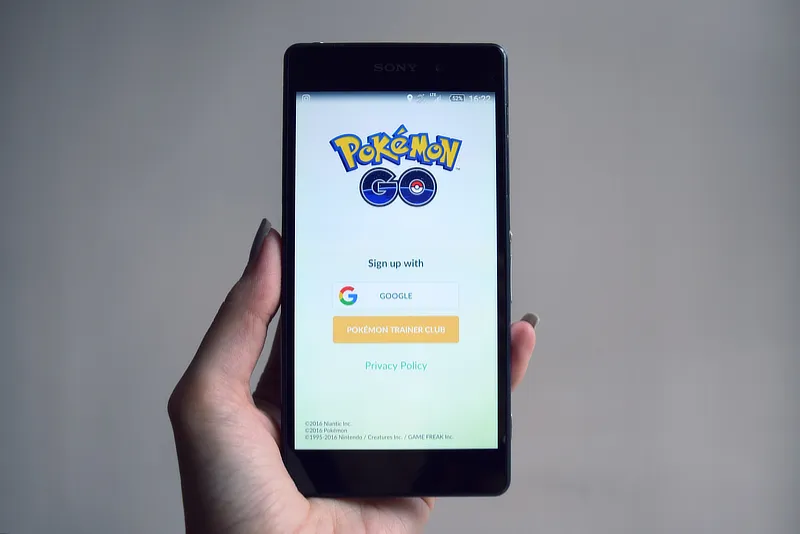In the ever-evolving world of technology, the introduction of augmented reality (AR) has been nothing short of revolutionary. This innovative technology has the potential to seamlessly merge the virtual and physical worlds, providing users with a whole new level of immersive experiences. From gaming and entertainment to education and healthcare, AR is revolutionizing various industries and offering unprecedented possibilities.
At its core, augmented reality refers to the integration of digital content with the real world in real-time. Unlike virtual reality, which creates a completely immersive digital environment, AR overlays digital elements onto the physical world, enhancing our perception and interaction with reality. This technology is typically experienced through smartphones, tablets, or dedicated AR glasses, which act as a medium to view and interact with the augmented content.

One of the most famous examples of AR technology is the popular smartphone game, Pokemon Go. Released in 2016, this game took the world by storm as it allowed players to hunt for virtual Pokemon creatures superimposed onto the real world. The game leveraged GPS and the camera on the player's smartphone to display Pokemon on the screen, giving the illusion that they were actually present in their surroundings.
Usability testing takes your app out into the real world and puts it to the test. By observing users as they interact with your app and collecting data on their actions and reactions, you can identify areas for improvement and ensure a seamless user experience. This hands-on approach allows you to fine-tune your design based on actual user behavior.
This successful implementation of AR gaming demonstrated the immense potential of this technology to transform how we engage with our surroundings.
AR is not limited to gaming, however. It has found applications in various industries, including education. Traditional learning methods often rely on textbooks and lectures, which can be limiting in terms of engagement and interactivity. But with AR, students can have a more immersive and interactive learning experience. Imagine studying history and being able to see historical figures come to life or virtually visiting ancient civilizations. AR allows for a more dynamic and hands-on approach to education, making learning more enjoyable and accessible.
In the healthcare sector, AR is being used to enhance diagnostics, surgical procedures, and patient care. Surgeons can use AR glasses to overlay patient records, X-rays, or other relevant medical information directly onto their field of view during surgery, improving accuracy and efficiency. Additionally, AR can aid in training medical professionals by providing realistic simulations, allowing them to practice complex procedures without putting patients at risk.
How does augmented reality work?
Augmented reality (AR) enhances the real-world environment by overlaying digital information onto it, creating an AR experience that merges real and virtual elements. Using an AR device such as a mobile device or head-mounted display like smart glasses, users can interact with virtual objects integrated into their surroundings. For instance, AR apps can utilize ARKit to deliver immersive experiences in real time, allowing users to engage with 3D models while navigating their real-world environment. This technology also finds applications in video games, creating interactive augmented reality games that blend the virtual world with physical settings.
The definition of augmented reality encompasses various augmented reality applications that enhance everyday experiences. Augmented reality technologies enable developers to create engaging AR systems that can be used in fields like education, marketing, and entertainment. Mobile augmented reality is especially popular, as it allows users to access augmented reality in action directly from their mobile device. The integration of AR and VR has led to innovative augmented reality applications that push the boundaries of how we perceive our environment, transforming mundane activities into exciting interactions with virtual information.
What is augmented reality used for in industry?
Augmented reality (AR) is revolutionizing various industries by enhancing the real-world environment with computer-generated content, providing an AR experience that blends seamlessly with the user's surroundings. AR applications are utilized in fields such as manufacturing, where technicians can use an AR device or smart glasses to overlay digital information on machinery for real-time maintenance guidance. Similarly, in healthcare, augmented reality technologies enable surgeons to visualize 3D models of organs overlaid on the patient's body, enhancing precision during procedures.
In the realm of entertainment, augmented reality games and video games have gained popularity, allowing players to interact with virtual objects within their real-world settings using a mobile device or head-mounted display. Platforms like ARKIT facilitate mobile augmented reality, enabling developers to create immersive AR apps that provide engaging augmented reality experiences. The integration of AR and VR creates mixed reality environments where users can navigate between the virtual world and the real, showcasing the diverse applications of augmented reality across multiple sectors.
What is mixed reality, or augmented reality vs. virtual reality?
Mixed reality (MR) combines elements of both augmented reality (AR) and virtual reality (VR), allowing users to interact with virtual objects within their real-world environment. In contrast, virtual reality immerses users in a completely virtual world through a head-mounted display or reality headset, isolating them from their surroundings. On the other hand, augmented reality experiences enhance the real world by overlaying computer-generated digital information onto the user's view using an AR device or mobile device. Popular AR applications, like those using ARKit, allow users to engage with 3D models and augmented reality games that blend seamlessly into their environment. In this way, augmented reality technologies showcase the exciting possibilities of AR and VR in various fields, such as education, gaming, and training.
To understand the definition of augmented reality, it's essential to recognize how augmented reality applications function. Mobile AR uses smart glasses or mobile devices to bring augmented reality in action, allowing users to see virtual information integrated into their daily lives. For example, an AR app might superimpose directions onto a street view, enhancing navigation. Augmented reality systems can also be employed in video games, where players interact with virtual and augmented reality elements. This interactivity encourages immersive gameplay while remaining anchored in the real-world. As technology evolves, the applications of augmented reality continue to expand, offering innovative ways to use augmented reality in various sectors.
Conclusion
Let Studio Liddell build your next AR solution, combining augmented reality and VR technologies to create immersive AR experiences. Our team specializes in developing AR applications that utilize smart glasses and head-mounted displays, enabling users to interact with virtual objects seamlessly integrated into their real-world environment. Whether it's a mobile AR app or an augmented reality game, we provide real-time solutions that enhance user engagement.
With the ability to use augmented reality through mobile devices and AR devices, our augmented reality systems redefine the definition of augmented reality. From 3D models to interactive virtual environments, we deliver augmented reality in action tailored to your needs. Experience the fusion of real and virtual worlds, as we leverage cutting-edge augmented reality technologies such as ARKit to create unforgettable augmented reality experiences.
Related Pages
Need a mobile app, call us today!
We are a team of experienced Augmented Reality developers based in Manchester UK, but we work with clients all over the world.
Call now +44 (0) 7798 834 159

